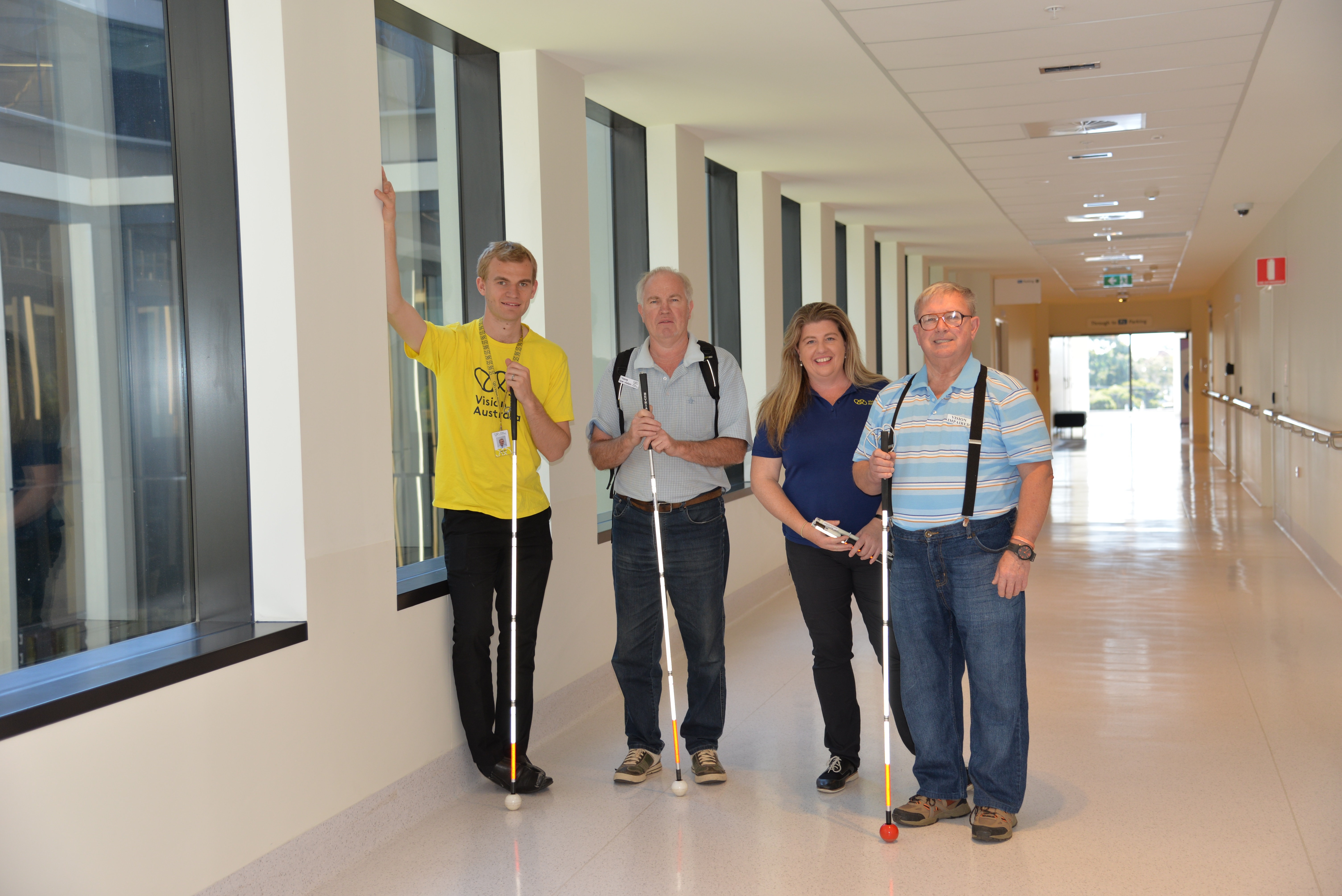 Bendigo Health hosted an orientation tour of the hospital for people with low vision as part of Vision Australia's White Cane Day.
Bendigo Health hosted an orientation tour of the hospital for people with low vision as part of Vision Australia's White Cane Day.
Navigating your way around a large hospital for the first time can be tricky and trickier still for those with low vision.
Bendigo Health hosted an orientation tour for white cane users as part of Vision Australia’s White Cane Day on Tuesday.
Vision Australia orientation and mobility specialist Jessica Timmons said many vision impaired people can feel lost and anxious in places they’ve never visited, and those uncertain feelings are often amplified during a hospital visit.
“People assume that someone with low vision has a companion, but some don’t. You have to fend for yourself if you’ve got no support and that’s not easy,” she said.
The tour helped familiarise white cane users with the hospital, which can often be taken for granted by the wider community, Ms Timmons said.
“Even something as simple as getting to the hospital from the bus stop can be difficult for vision impaired people,” she said.
In addition to the tour, Vision Australia provided the public with a virtual reality experience that replicated eye conditions like macular degeneration, glaucoma, cataracts and diabetic retinopathy to give people an understanding of what low vision is like.
Vision Australia estimates there are 384,000 people in Australia who are blind or have low vision. The blind and low vision population in Australia grew by 7.6 percent from 2013-16.
Only five percent of print material is available in accessible formats in Australia. The most common causes of blindness and low vision are age-related macular degeneration, cataracts and glaucoma.